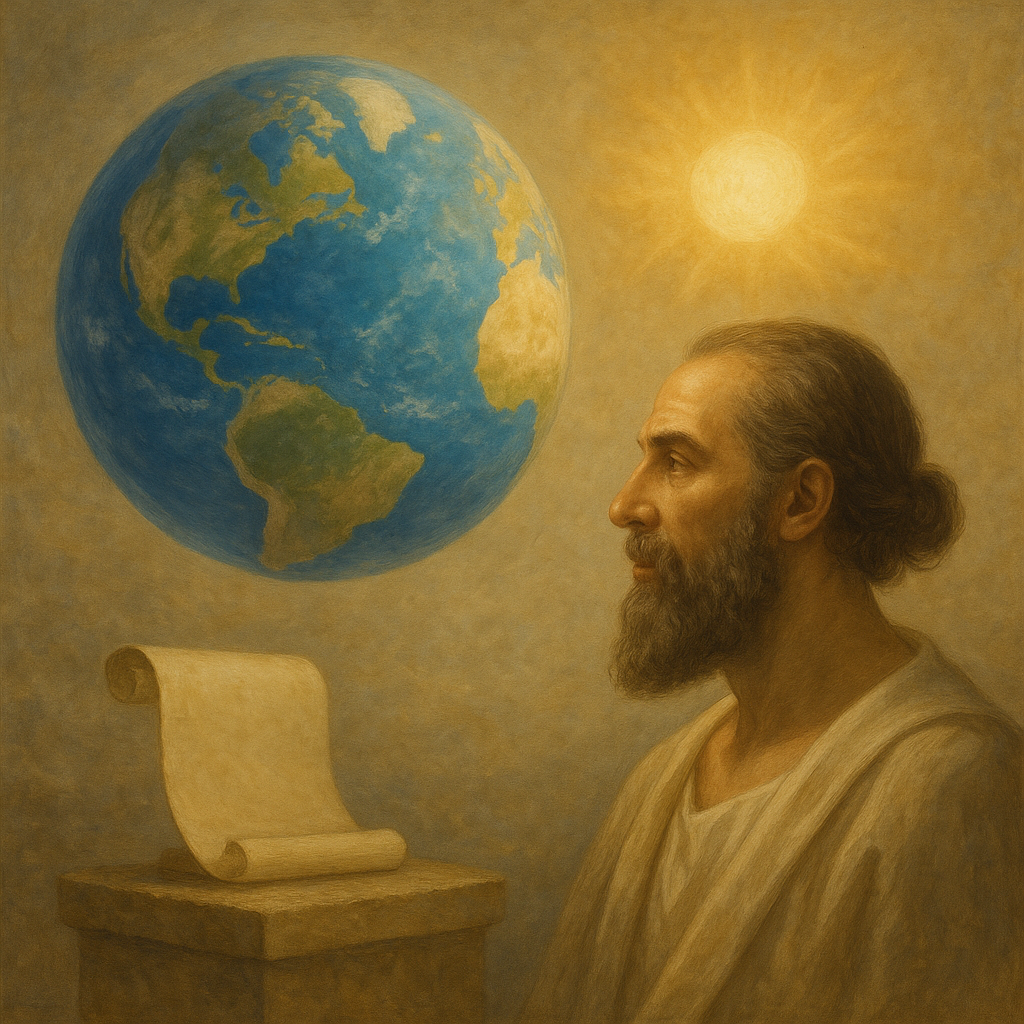
From Philosophy to Precision: The Story of an Ancient Discovery
More than 2,000 years before satellites orbited Earth or astronauts looked down on its curved horizon, a handful of ancient thinkers realized something extraordinary:
The Earth is not flat. It is round — a sphere — and it can be proven using shadows, stars, and simple geometry.
In this article, we explore who first discovered Earth’s shape, how they proved it, and why their ideas still matter today.
 Step 1: Philosophy Plants the Seed
Step 1: Philosophy Plants the SeedThe idea of a round Earth was first suggested by Pythagoras, a Greek philosopher and mathematician. He believed the sphere was the most perfect shape in nature — and so, Earth must be spherical too.
But this was not based on observation or proof — it was a philosophical belief, not a scientific conclusion.
 Step 2: Observation Brings Proof
Step 2: Observation Brings ProofA century later, Aristotle gave the first empirical evidence that Earth is round. He presented several observations that couldn’t be explained by a flat Earth:
 1. Earth’s Shadow During Lunar Eclipses
1. Earth’s Shadow During Lunar EclipsesWhen the Moon enters Earth’s shadow, the shadow is always curved — no matter where or when the eclipse happens. Only a spherical object casts a consistently round shadow.
 2. Disappearing Ships on the Horizon
2. Disappearing Ships on the HorizonAs ships sail away, observers notice that the hull disappears first, followed by the mast. This is exactly what you'd expect if the ocean surface is curved.
 3. Changing Stars with Latitude
3. Changing Stars with LatitudeTravelers heading south see new stars rise above the horizon, while others disappear. This can only happen if the observer is moving across a curved surface.
 Based on these observations, Aristotle concluded that Earth is not flat, but spherical.
Based on these observations, Aristotle concluded that Earth is not flat, but spherical.
 Step 3: The First Scientific Measurement
Step 3: The First Scientific MeasurementThe most famous and mathematically precise demonstration came from Eratosthenes, director of the Library of Alexandria. He not only accepted that Earth was round — he actually measured its circumference with remarkable accuracy.
 His Method (c. 240 BCE):
His Method (c. 240 BCE):In Syene (now Aswan, Egypt), on the summer solstice, the Sun was directly overhead at noon. Vertical objects cast no shadow.
In Alexandria, about 800 km north, objects did cast a shadow at the same time.
Eratosthenes measured the angle of the shadow in Alexandria: about 7.2°, or 1/50th of a full circle (360°).
Using geometry, he reasoned that if 7.2° corresponds to 800 km, then the full circumference of Earth must be:
800km×50=40,000km
 Modern value: ~40,075 km
Modern value: ~40,075 km Margin of error: Less than 1% — an extraordinary achievement using no technology beyond simple tools and logic.
Margin of error: Less than 1% — an extraordinary achievement using no technology beyond simple tools and logic.
 Did Other Cultures Know the Earth Was Round?
Did Other Cultures Know the Earth Was Round?Yes — there’s evidence that ancient Indian, Babylonian, and Islamic scholars also accepted a spherical Earth.
In the Islamic Golden Age, scholars like Al-Biruni (11th century) calculated Earth's radius with impressive precision.
But the first to prove and measure it with scientific reasoning were the Greeks — especially Eratosthenes, whose method remains legendary in the history of science.
 Summary Table
Summary Table| Thinker | Contribution | How | When |
|---|---|---|---|
| Pythagoras | First to suggest Earth is spherical | Philosophical reasoning | ~6th century BCE |
| Aristotle | First observational proof | Eclipses, ships, stars | ~4th century BCE |
| Eratosthenes | First measurement of Earth’s size | Geometry + shadows | ~3rd century BCE |
 Why This Discovery Still Matters
Why This Discovery Still MattersWhat makes this ancient discovery so powerful is that it shows the essence of science:
Using observation and reason to uncover truth
Asking simple but profound questions
Applying mathematics to the natural world
Today, you can still recreate Eratosthenes’ experiment with just a stick, a ruler, and the Sun — and reach the same conclusion:
We live on a sphere — a small world in a vast cosmos.
